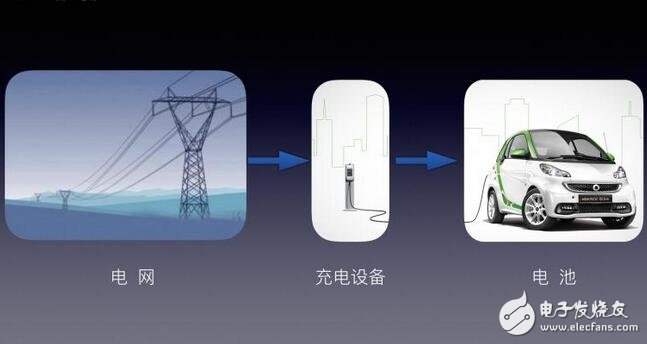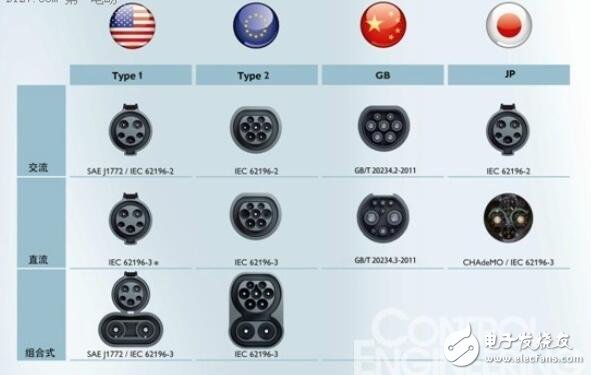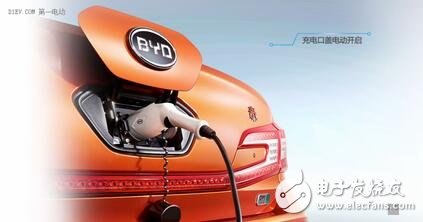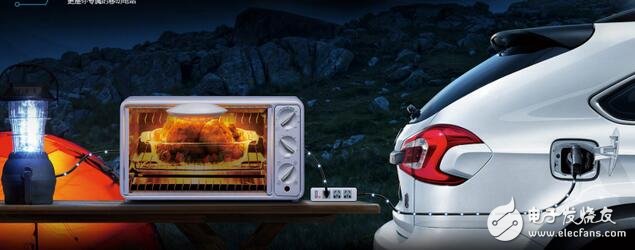Electric vehicle charging principle and common vehicle charging port position
Charging is an important part of the use of electric vehicles. The charging experience largely determines the consumer's purchasing decision and car experience. Today, the old driver talks to you about charging.
Charging principle
We know that electric vehicles are powered by on-board power batteries and powered by motors to drive. The electric vehicle consumes the energy of the battery, and the battery needs to be replenished after the power is consumed. The process of transferring the electric energy in the power grid or other energy storage device to the battery of the vehicle is charging.
The electrical energy in the power grid or energy storage equipment needs to be converted by the charging equipment to match the technical characteristics of the electric vehicle power battery to complete the charging. The conversion process of the charging device also needs to negotiate with the battery management system BMS (Battery Management System) on the electric vehicle to complete the charging with appropriate voltage and current, and during the charging process, the charging current will decrease with the charging process. In the early stage, the large current can be charged faster, and the small current can be charged later.

Several terms
SoC: State ofCapacity, the current capacity of the battery, usually expressed as a percentage, such as 60%.
BMS: Battery Management System, battery management system, monitor battery status, uniformly manage battery charging, discharge, protect battery safety, maintain battery status to ensure battery operation.
C: Current, battery charge and discharge rate, defined as 1 hour to fully charge the battery to 1C. If it is charged at 2C, then the battery can be fully charged in 0.5 hours. Therefore, the larger the magnification, the faster the charging. Large rate charging requires battery material and battery management system support. Generally, large rate charging will reduce battery life to a certain extent.
Two main types of charging
AC slow charge
The AC charging pile has no power conversion module, does not do AC/DC conversion, outputs AC power, is connected to the vehicle, and is converted into DC power by the charger on the vehicle before inputting the battery. The charging power depends on the car charger power. At present, the mainstream car chargers are 2Kw, 3. 3Kw, and 6. 6Kw. In general, the charging is slow. The average hybrid model takes 4-6 hours to fill, and the pure electric vehicle takes more than 8 hours. The charging rate is basically below 0.5C.
DC fast charge
The DC charging pile has a built-in power conversion module, which can convert the AC power of the power grid into DC power, and does not need to be converted by the vehicle charger to directly connect to the battery in the vehicle. The charging power depends on the battery management system and the charging pile output power, which are small.
At present, Tesla's fast charging power reaches 120Kw, and it can fill 80% of electricity in half an hour. The charging rate is close to 2C, and the Beiqi Ev200 can reach 37Kw, and the charging rate is 1.3C.
Charging interface
The charging interface is divided into an AC interface and a DC interface. Generally, the hybrid vehicle has only an AC charging interface because of the small amount of power of the vehicle, and the pure electric vehicle is generally equipped with two interfaces of an AC interface + a DC interface because of a large amount of power.

The charging interface is also standard, and the world mainly has American standards, European standards, Japanese standards and Chinese standards. At present, electric vehicles sold in China, except Tesla, are interfaces that conform to Chinese national standards. In theory, vehicles of different manufacturers can be charged on charging piles of all manufacturers. However, because the definition of the software protocol is not completely detailed, there are also cases where a very small number of charging piles and the vehicle BMS system are incompatible. In addition, Tesla also promised to give a program that is compatible with Chinese standards.
Common vehicle charging port position
BYD Qin

Only the AC slow charging interface is on the trunk lid of the car.
BYD Don

Only the AC slow charging interface is behind the body side.
SAIC Roewe e550
![[Science] Electric vehicle charging principle and common vehicle charging port position](http://i.bosscdn.com/blog/15/14/0W/633-0.jpg)
Only the AC slow charging interface is on the left side of the car body.
BAIC Ev Series
![[Science] Electric vehicle charging principle and common vehicle charging port position](http://i.bosscdn.com/blog/15/14/0U/W8-1.jpg)
![[Science] Electric vehicle charging principle and common vehicle charging port position](http://i.bosscdn.com/blog/15/14/0U/962-2.jpg)
There are two interfaces of AC slow charging and DC fast charging. The AC slow charging interface is at the left rear of the vehicle body, and the DC fast charging interface is at the front logo.
Chery Ariza 7e
Only the AC slow charging interface is behind the body side.
![[Science] Electric vehicle charging principle and common vehicle charging port position](http://i.bosscdn.com/blog/15/14/0W/3C-3.jpg)
According to the official data of each manufacturer, the charging time comparison table of each model is compiled.
![[Science] Electric vehicle charging principle and common vehicle charging port position](http://i.bosscdn.com/blog/15/14/0R/532-4.jpg)
Public charging and private charging
From the point of view of ownership, there are two types of charging piles: public charging piles and private charging piles. In public places, public charging piles provide charging services for the public and charge for charging services. The private charging pile only charges the vehicle and is not open to the public.
Due to the parking space, a large number of electric vehicle owners do not have charging piles installed and need to be charged on public charging piles.
It is estimated that private charging piles account for less than 30% of the total charging pile.
Mobile charging treasure
Similar to mobile phone and tablet charging solutions, there are also mobile charging products and solutions for electric vehicles. The charging treasures have different capacities, different product forms, trolley types, and mobile charging vehicles. Mobile charging treasures have an important complementary effect on emergency scenarios.
![[Science] Electric vehicle charging principle and common vehicle charging port position](http://i.bosscdn.com/blog/15/14/0V/055-5.jpg)
Wireless charging
Since Palm introduced the mobile wireless charging accessory "Golden Stone" in 2009, there have been many mobile phones supporting wireless charging, and electronic charging products such as electric toothbrushes also have wireless charging solutions.
In the field of electric vehicles, in recent years, many organizations have introduced high-power wireless charging products for electric vehicles, such as Qualcomm's Halo, ZTE's wireless charging products, Evatran's wireless charging for GM Volanda, Nissan Leaf and Tesla. product.
Veteran manufacturers such as BMW Mercedes-Benz have said that they support wireless charging in future models. LeTV said its electric vehicles will be equipped with wireless charging.
At present, the commercial scale of wireless charging is still not large, but the future of wireless charging is expected due to the good experience of parking and charging and forgetting to charge.
![[Science] Electric vehicle charging principle and common vehicle charging port position](http://i.bosscdn.com/blog/15/14/0V/504-6.jpg)
Change power
It's as quick and convenient as changing your phone. The electric vehicle industry is also exploring the mode of power exchange. In the early days, such as the case of better place, Beiqi has recently been commercialized in the Beijing taxi market. Weilai Automobile has repeatedly mentioned that it may adopt the power-changing mode. Although the power-changing mode is not well developed due to high cost, complicated technology, and difficult model compatibility, Xiaobian believes that it is in a specific market or a specific automobile manufacturer. There may be different effects. Let us look forward to it.
Displacement sensor, also known as linear sensor, is a linear device belonging to metal induction. The function of the sensor is to convert various measured physical quantities into electricity. In the production process, the measurement of displacement is generally divided into measuring the physical size and mechanical displacement. According to the different forms of the measured variable, the displacement sensor can be divided into two types: analog and digital. The analog type can be divided into two types: physical property type and structural type. Commonly used displacement sensors are mostly analog structures, including potentiometer-type displacement sensors, inductive displacement sensors, self-aligning machines, capacitive displacement sensors, eddy current displacement sensors, Hall-type displacement sensors, etc. An important advantage of the digital displacement sensor is that it is convenient to send the signal directly into the computer system. This kind of sensor is developing rapidly, and its application is increasingly widespread.
Displacement Transducer,Linear Displacement Transducer,Linear Variable Differential Transducer,Linear Variable Displacement Transducer
Changchun Guangxing Sensing Technology Co.LTD , https://www.gx-encoder.com